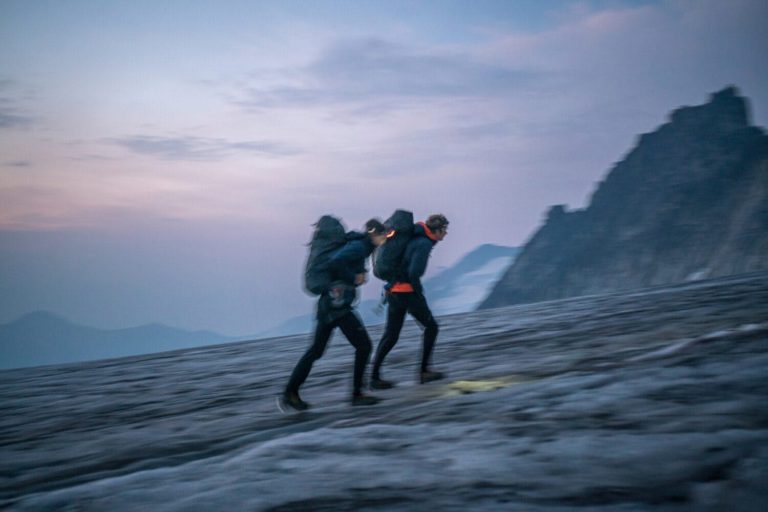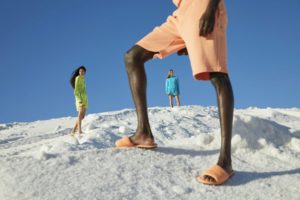Arc’teryx
Our Rating: 3 Stars - It's a start
Price: $ $ $ $
Country of origin: Canada
Official brand website: Visit

Arc’teryx Sustainability Review: The Path to a Greener Outdoor Industry
Welcome to our in-depth exploration of Arc’teryx’s sustainability initiatives in our article, “Arc’teryx Sustainability Review: The Path to a Greener Outdoor Industry.” Arc’teryx, a well-known name in the outdoor sector, is celebrated for its high-performance gear.
As part of our commitment to transparency and sustainability in the fashion industry, we take a closer look at how Arc’teryx is shaping the future of outdoor apparel with a focus on eco-conscious practices. Join us as we delve into the environmental impact, workers’ rights, and animal welfare considerations within the brand’s operations.
About Arc’teryx
Arc’teryx is a prominent brand in the outdoor industry. Owned by Amer Sports, a company known for its dedication to sustainability, Arc’teryx strives to combine performance and environmental consciousness.
However, the brand faces environmental challenges within its supply chains. In our evaluation, known as the “Planet” rating, Arc’teryx has been categorized as “Not Good Enough.” Let’s explore the factors that contribute to this rating.
Environmental Impact
- They aim to source eco-friendly and safe materials for people, all while maintaining high-quality and performance standards.
- Many outdoor fabrics rely on synthetic materials and chemicals to achieve the desired performance and durability.
- They actively collaborate with their material suppliers through a Materials Compliance Program to reduce the environmental impact.
- They follow the Bluesign® system’s Restricted Substances List (RSL) to manage materials that adversely affect the environment and health effectively.
- It’s their priority to ensure that RSL standards are consistently upheld throughout their supply chain.
- As a Bluesign® system partner, they’ve opted for an eco-friendly material system emphasizing safety, environmental responsibility, and resource efficiency.
- Their system guides their choice of materials within the supply chain by prioritizing resource productivity, consumer safety, water, and air emissions, as well as occupational health and safety.
Arc’teryx predominantly utilizes conventional manufacturing processes with a higher environmental footprint, incorporating a few lower-impact materials into their products. While they produce long-lasting items that help reduce waste and promote sustainability, there is no clear evidence of significant efforts to decrease water consumption in their supply chain.
Sustainability in the fashion industry increasingly demands responsible water use. Arc’teryx has set science-based targets to reduce greenhouse gas emissions, but further proof is needed to confirm their progress. Additionally, there’s a lack of evidence regarding Arc’teryx’s actions to protect biodiversity in its supply chain, a vital element of preserving a healthy planet.

Workers’ Rights
Arc’teryx’s approach to workers’ rights, evaluated under our “People” rating, has been rated as “Not Good Enough.” Some organizations certify part of the final production stage of Arc’teryx’s products, indicating some commitment to fair labor practices.
However, there needs to be concrete evidence of efforts to support diversity and inclusion in their supply chain. Promoting diversity and inclusion is essential for equal opportunities and creating a more inclusive industry.
Arc’teryx takes positive steps, such as prohibiting suppliers from charging recruitment fees to workers. Yet, while the brand claims to have a program for wage improvement, there’s insufficient evidence to ensure that most workers in its supply chain receive a living wage.
Paying fair wages is essential for the well-being and dignity of workers. During the COVID-19 pandemic, Arc’teryx disclosed protective policies for workers in its supply chain, emphasizing the significance of worker safety.
Animal Welfare
Arc’teryx has achieved an “It’s a Start” rating in the “Animals” category for animal welfare. The brand has formal policies aligned with the Five Freedoms of Animal Welfare and precise implementation mechanisms, reflecting its commitment to ensuring the well-being of animals in their supply chain.
Although it appears that Arc’teryx uses leather, they do not use fur, angora, exotic animal skin, or exotic animal hair. The wool they source comes from non-mulesed sheep, demonstrating a responsible approach to animal sourcing.
The down used by Arc’teryx is certified by the Responsible Down Standard, ensuring ethical sourcing. The brand traces some animal-derived materials back to the first production stage, indicating a degree of transparency in its supply chain.
Frequently Asked Questions
Yes, Arc’teryx is deeply committed to sustainability, seeking to minimize its environmental impact and promote ethical practices.
The primary focus of Arc’teryx’s sustainability review in the outdoor industry centers on sourcing safe materials for both people and the environment while maintaining the highest product quality and performance.
Arc’teryx addresses environmental impacts in its supply chain through a comprehensive Materials Compliance Program that engages with material suppliers to ensure standards are met, explicitly following the Bluesign® system’s Restricted Substances List (RSL).
Arc’teryx follows the Bluesign® system and RSL, emphasizing safer, environmentally responsible materials to be used at each step of its supply chain, making sustainability a core design input.
The Bluesign® system is significant in Arc’teryx’s sustainability efforts because it defines safer materials for use at every supply chain stage, focusing on resource productivity, consumer safety, water and air emissions, and occupational health and safety.
Arc’teryx prioritizes resource productivity and environmental responsibility through the Bluesign® system, which helps them choose safer materials throughout their supply chain, reducing their ecological footprint.
Consumer safety is a central component of Arc’teryx’s sustainability approach, as they adhere to the Bluesign® system’s standards that ensure materials used in their products are safe for consumers, promoting well-being and health.
Overall Evaluation
Arc’teryx has received an overall rating of “It’s a Start” based on publicly available information. While the brand has shown positive efforts in certain areas, there is still room for improvement across multiple sustainability aspects.
As consumers, we can advocate for change and encourage brands like Arc’teryx to strive for greater sustainability and ethical practices continually. By supporting brands prioritizing the well-being of the planet, workers, and animals, we can contribute to a more sustainable future.







